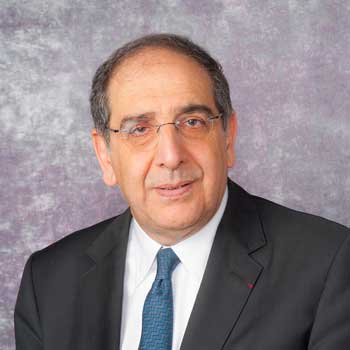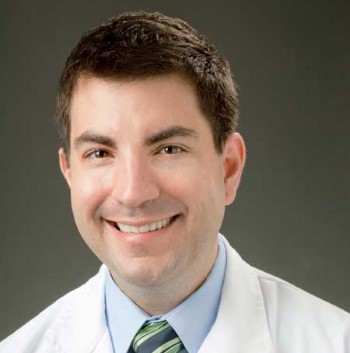Cover story
Gene Therapy: Staying Grounded
The promise and perils of gene therapy
 Since the Food and Drug Administration (FDA) approved voretigene neparvovec-rzyl (Luxturna™) from Spark Therapeutics roughly one year ago, patients with inherited retinal dystrophies (IRDs) have been given reason to believe they may see light at the end of their darkening prognosis. Yet, despite proof that inherited blindness can be pushed back, a significant amount of work remains to extend gene therapy’s recent victories to larger patient populations.
Since the Food and Drug Administration (FDA) approved voretigene neparvovec-rzyl (Luxturna™) from Spark Therapeutics roughly one year ago, patients with inherited retinal dystrophies (IRDs) have been given reason to believe they may see light at the end of their darkening prognosis. Yet, despite proof that inherited blindness can be pushed back, a significant amount of work remains to extend gene therapy’s recent victories to larger patient populations.
Below, two clinician scientists studying IRDs offer their differing perspectives on the scientific and clinical challenges that still face their field and patients.
NOTE: The following works are expressed by and represent the opinions of these specific ARVO members. They are intended to provide two opinions on this topic, but do not represent all opinions. Nor do they represent the position of ARVO as an organization.
Position 1: A look at the potential for patient access, By Jose Alain Sahel Jr., MD, FARVO
Position 2: The value in hope for rare diseases, By Mark Pennesi, MD, PhD
Position 1: A look at the potential for patient access
By Jose Alain Sahel Jr., MD, FARVO
 With the recent approval of Luxturna — a gene therapy product designed for patients affected with retinal degenerations consecutive to biallelic mutations in the RPE65 gene — the work of a generation of scientists and clinicians on the identification of gene defects and the design of gene-based therapeutic strategies has entered a new era. Real-life implementation of these breakthrough technologies is now happening, raising much hope and some concerns.
With the recent approval of Luxturna — a gene therapy product designed for patients affected with retinal degenerations consecutive to biallelic mutations in the RPE65 gene — the work of a generation of scientists and clinicians on the identification of gene defects and the design of gene-based therapeutic strategies has entered a new era. Real-life implementation of these breakthrough technologies is now happening, raising much hope and some concerns.
As the promises are high, I will focus on issues related to patient access to treatment:
Number of genes and heterogeneity of diseases
To understand the numerous challenges associated with the further development of gene therapy for inherited retinal degenerations (IRDs), the extensive genetic (more than 250 causative genes) and phenotypic heterogeneity should be considered. RPE65 mutations account for a very small minority of Leber's congenital amaurosis (LCA) patients. Often genotype-phenotype correlations are not possible, as different mutations in the same gene can cause different diseases or the same mutation can result in different phenotypes. This has been long well-known, but the lack of an appropriate clinical and molecular classification of diseases will impact the access to treatment and yield of genetic testing — the definition of target diseases for molecular therapies.
Recessive vs. dominant, gene replacement and gene editing
Replacing defective genes is particularly suitable for monogenic recessive disorders that are, in general, associated with loss of function gene mutations. In a dominantly inherited disease, the mutations often result in producing toxic variants of the protein, requiring elimination or reduction of the mutant protein while maintaining expression of the wild-type protein. The mutational heterogeneity characteristic for diseases represents a significant obstacle to development of gene therapies as the mechanism of action must be identified, such as haploinsufficiency versus dominant negative. For example, more than 150 mutations in the rhodopsin gene (RHO) are implicated in RHO-linked (ad) retinitis pigmentosa and associated with phenotypic variations (see above).
In contrast to the gene replacement/augmentation therapy, gene editing involves mutation repair at the DNA level. As the genetic modifications are permanent, the treatment effects are expected to be permanent and curative. At present, the CRISPR-Cas system has been used to create in vitro and in vivo models for studying IRDs and to explore potential treatments, like the development of patient-specific cell-based therapies using CRISPR-modified iPSCs. This technology presents an unprecedented opportunity. Yet, off-target effects are still a major concern with CRISPR/Cas9 technology. Further research to assess and understand the risks and eventually improve the specificity of genome editing is crucial for its translation to clinic.
Stage of disease: the timing of interventions. When is it too late?
High-resolution in vivo imaging (optical coherence tomography, adaptive optics) and functional studies (microperimetry) are of critical importance for establishing the stage of disease, the choice of appropriate therapy and the benefit of the therapy, and should be extended beyond testing visual field and visual acuity. Structural versus functional loss of photoreceptors, as well as the status of inner retinal cells, must be determined in order to predict whether the loss of function can be reversed by correcting the gene defect. Neuroprotective approaches may be used to complement gene replacement. At later stages, vision restoration using optogenetics, prostheses or stem cells offer short- and long-term promises.
Design of clinical trials
Clinical trials must initially establish the safety profile of the tested therapy. As this cannot be established in healthy volunteers, the first patients enrolled most often display very advanced disease stages. While this may limit the risk of impairing the remaining useful vision in these patients, the likelihood that the target cells are still viable and that some preliminary evidence for functional benefit will be demonstrated, is low. The information for such patients requires full transparency about the very limited expectations at these stages.
The design of clinical trials is expected to establish the benefit of the emerging therapeutic strategies, especially in real-life situations. Standardized mobility and task-related tests are needed for assessment of the subjective visual handicap and for a reliable evaluation of the actual benefit. Development of new rehabilitation programs and devices, especially those that take advantage of the visual plasticity should be of paramount importance as most of the therapies may not restore normal vision.
Further research to assess and understand the risks and eventually improve the specificity of genome editing is crucial for its translation to clinic.
Patient expectations
Patient expectations should be assessed at relevant time points before and during the treatment course. Careful screening, counseling and management of patient expectations are critical for establishing correlations between subjective expectations and actual outcomes of the emerging therapies for IRDs. The proper information on the expected benefit, possible risks, availability and price of the treatment has paramount importance. We have to acknowledge that we still lack information on major topics such as natural history expected outcomes, side effects and the clinician’s need to share our concerns relating to such gaps with our patients.
Pricing
The first ever FDA approved gene therapy for retinal dystrophy Luxturna is priced at $850,000 for a one-time treatment. More gene therapies will come on the market in the future and their price may not be very different. This requires a new approach and new algorithms developed jointly by the patient community, care providers, policy makers, drug companies, insurers and the society as a whole on the payment models, in order to continue to fund and build the field while ensuring that no patient that may benefit from these innovations is left out.
These issues will evolve favorably as the knowledge we still miss and the promising technologies will continue to build upgrow. Care should be taken to limit the risks of side-effects, provide full information to the public, patients and care providers, in order to ensure that no disappointment follows the high enthusiasm justifiably raised by the current success.
Position 2: The value in hope for rare diseases
By Mark Pennesi, MD, PhD
 For years, I have been telling my patients with inherited retinal dystrophies (IRDs), “You have a rare genetic eye disease that is slow but progressive. Unfortunately, we don’t have a treatment but are working very hard on cures such as gene therapy and stem cells and we might have something in the next five years.” Of course, it didn’t take long until one of my wittier patients pointed out that I had been saying the same thing for the past five years and asked, “where are these promised treatments?” Naturally, I was bit crestfallen and defensive about how long research can take, but sympathetic to the frustration of someone who is relentlessly losing their vision.
For years, I have been telling my patients with inherited retinal dystrophies (IRDs), “You have a rare genetic eye disease that is slow but progressive. Unfortunately, we don’t have a treatment but are working very hard on cures such as gene therapy and stem cells and we might have something in the next five years.” Of course, it didn’t take long until one of my wittier patients pointed out that I had been saying the same thing for the past five years and asked, “where are these promised treatments?” Naturally, I was bit crestfallen and defensive about how long research can take, but sympathetic to the frustration of someone who is relentlessly losing their vision.
The FDA approval of Voretigene Neparvovec-rzyl (Luxturna™) for treatment of biallelic RPE65 mutation associated retinopathy has marked an inflexion point in these conversations. No longer are we talking with our patients about theoretical treatments, but one that has demonstrated tangible improvements. It is critical to stress to patients that a treatment such as Luxturna is specific only to patients with RPE65 mutations. However, in the last nine months I have seen a notable change in the attitudes of my patients. Even though they are initially disappointed that this treatment many not apply to them, they appreciate the significance of the proof of principle that gene replacement therapy can work. This fact alone has helped instill a new sense of hope, and its value cannot be underestimated.
As outlined by Dr. Sahel in the accompanying article, there remain many scientific challenges to development and implementation of novel gene therapies for IRDs. There are additionally a number of practical challenges that need to be addressed.
For example, many patients with IRDs have yet to have had genetic testing. One significant barrier is the lack of coverage by insurance companies or healthcare systems for genetic testing. All too often, payment for this service is denied because such testing “will not change the treatment plan since there are no therapies.” The ability to participate in a clinical trial is not considered a valid reason for payment. Some patients are able access research testing if they are seen in a large referral center, but many who ware seen locally have yet to get genetic testing. Initiatives such as MyRetinaTracker, which is funded by the Foundation Fighting Blindness (which provides panel based genetic testing), and RPE65 mutation testing, sponsored by Spark Therapeutics are a good start. But more is needed. Not only is it important for physicians to get genetic testing for their IRD patients but it is critical for us to advocate for insurance companies/healthcare systems to improve their coverage of such testing.
The Institute for Clinical and Economic Review estimates the lifetime direct and indirect costs of patient with an early onset retinal degeneration, such as seen with biallelic RPE65 mutations, to be upwards of $1 million dollars.
Another barrier to the development of additional gene therapies is the lack of IRD specialists to see these patients and conduct clinical trials for new treatments. This can especially be a problem in rural areas. For example, it is not atypical for our clinic to see patients who drive hours or fly from adjacent states for their clinical care or to participate in gene therapy clinical trials. The advent of novel therapies for IRDs is bound to attract more trainees to the IRD field, but these individuals need to be supported through dedicated fellowships, which are currently not widely available.
One final issue is the cost of these novel gene therapy treatments. The estimated cost of Luxturna is approximately $425k per eye for a one-time treatment. While this cost is quite high, it must also be put in context of the economic impact of blindness. The Institute for Clinical and Economic Review estimates the lifetime direct and indirect costs of patient with an early onset retinal degeneration, such as seen with biallelic RPE65 mutations, to be upwards of $1 million dollars. The long-term efficacy of gene therapy treatments remains to be determined, but if early benefits continue such costs might be justified. As additional gene therapies come to market, similar economic analyses will need to be performed and new models for payment might emerge. For example, one proposal would be to annuitize payment on a yearly basis provided that continued efficacy could be demonstrated.
In spite of the numerous issue that still surround gene therapy for inherited retinal degenerations, this remains an exciting period of renewed hope, both for the treating physicians and the patients with these rare diseases.
